Body shop owners, managers and staff had an opportunity to participate in hands-on projects, industry training and meetings with vendors at The Midwest Collision Repair Trade Show & Conference, held May 31-June 1 in Kansas City-Overland Park, KS. The third annual event was hosted by the Nebraska Auto Body Association and Missouri Auto Body Association, in collaboration with several Midwest body shop professionals.
“We all have the same pain points, so it’s very important to come together and realize you’re not alone, and you don’t have to be the expert in all things,” said Gina Cotton, executive director of the Nebraska and Missouri auto body associations, who coordinated the event. “We might live in different areas, but we all face the same issues and strive to do safe and proper repairs and stay in business.”
 Pictured, left to right, are Mike Anderson from Collision Advice, Tyler Claypool from Optima Worldwide, and Sheryl Driggers from Collision Advice.
Pictured, left to right, are Mike Anderson from Collision Advice, Tyler Claypool from Optima Worldwide, and Sheryl Driggers from Collision Advice.
Cotton said the book “The E-Myth” focused on the fact that most small business owners and managers work IN their businesses when they really should spend more time working ON them.
She said the Midwest Trade Show allowed collision repairers to escape the walls of their businesses, talk to peers and learn from top vendors and presenters. Then, they could return home enriched to apply what they learned to their day-to-day operations.
More than 420 people registered for the event.
“Our population is not as it is in some other areas of the country so when we can bring in that many people, it’s a feat in itself,” said Cotton.
Cotton recalled attending the SEMA Show and hearing speakers provide a perspective of the industry she hadn’t heard before.
“I thought our mom-and-pop shops in the Midwest would love this,” she shared. “That has always been my goal -- to bring the same SEMA vibe to the Midwest in a smaller, more palatable version.”
When planning the educational sessions, Cotton looked for national presenters who were unfamiliar to attendees. Throughout the event, there were 18 speakers and 14 classes held.
“It was our biggest year for education and our lineup was off the charts,” noted Cotton.
Mike Anderson on 100% Disassembly, Buying and Selling Body Shops
During the first day, Mike Anderson and Jeff Oldenettel from Collision Advice offered a five-hour class on “100% Disassembly and Parts Best Practice.” The educational session explored the importance of creating a culture of doing things “WITH your team, not TO your team” and how to gain support for the common goal of 100% disassembly.
“Often, shops believe they are completely disassembling vehicles; however, we find the vehicles still have components that should have been removed and installed (R&Id),” noted Anderson.
Cotton said the training was a draw for attendees. “I heard from so many people that they loved the indepthness,” she noted. “I’m so grateful to Mike and his team. They are amazing.”
During the event, Anderson teamed up with Craig Stevens from CCC ONE to discuss the customer experience, CCC ONE product updates, new features and the use of artificial intelligence (AI).
Anderson also gave a presentation on “Buying and Selling a Business,” providing tips for attendees looking to grow their companies and expand to multiple locations. He discussed how to value a business, find potential targets for acquisition, when to staff, and running a Universal Commercial Code (UCC) report. Following his presentation, he and Casey Lund from Collision Leaders talked about growth strategies.
Fixing Profit Leaks
Taylor Moss from OEC talked about finding common areas where profits leak out of a collision repair business and how to patch the holes and grow profit. These included inefficient processes, underused resources and overlooked revenue streams.
“There are collision centers all over the nation that are mindful of these areas; they are winning and collecting profits,” Moss said. “Others simply let profit leak out of their business.”
OEC was a new sponsor of the Midwest Show this year.
“OEC believes that sponsoring regional trade shows is critical to get close to shops that don't have larger travel budgets but still need to see the latest and greatest in technology, tools and education,” said Moss. “This industry is changing at light speed and if you can't adapt to these changes, it will be very difficult, if not impossible, to operate a viable collision repair business over the coming decade.”
US Auto Supply also sponsored the Midwest Trade Show.
“US Auto Supply will continue to support collision industry associations,” said Rob Korycanek from US Auto Supply.” We feel their value provides shops an opportunity to stay updated with new information or tools essential to the day-to-day operations of a collision center.”
Korycanek said the automotive industry evolves every minute.
“What was the standard practice at 8 a.m. may change by 5 p.m. the same day,” he noted. “Exposure, influence and participation is needed just to keep pace with our industry.”
When you have dedicated professional consultants moderating discussions between OEMs, manufacturers, insurance companies and estimating platforms, Korycanek said, you need a grander outlet to be heard. He added that regional and national associations provide that opportunity to be heard and educate shop owners so they can survive and grow their businesses.
Post-Repair Inspections, OEM Certifications
Erin Solis from Square One Systems presented on “All Things Post Repair Inspection.” Solis shared data on completed post-repair inspections from across the country and explained how to set up a body shop to avoid being in “a bad spot where it’s your possible bad repair being inspected.”
“The problem starts with lack of training and ends in lack of process,” explained Solis. “If technicians were properly trained on repair techniques and how to read OEM repair procedures, and the quality process was in place to ensure that technique was done correctly and the procedure was completed properly, it would eliminate a majority of what has gone wrong in these post-repair inspection situations that we have studied.”
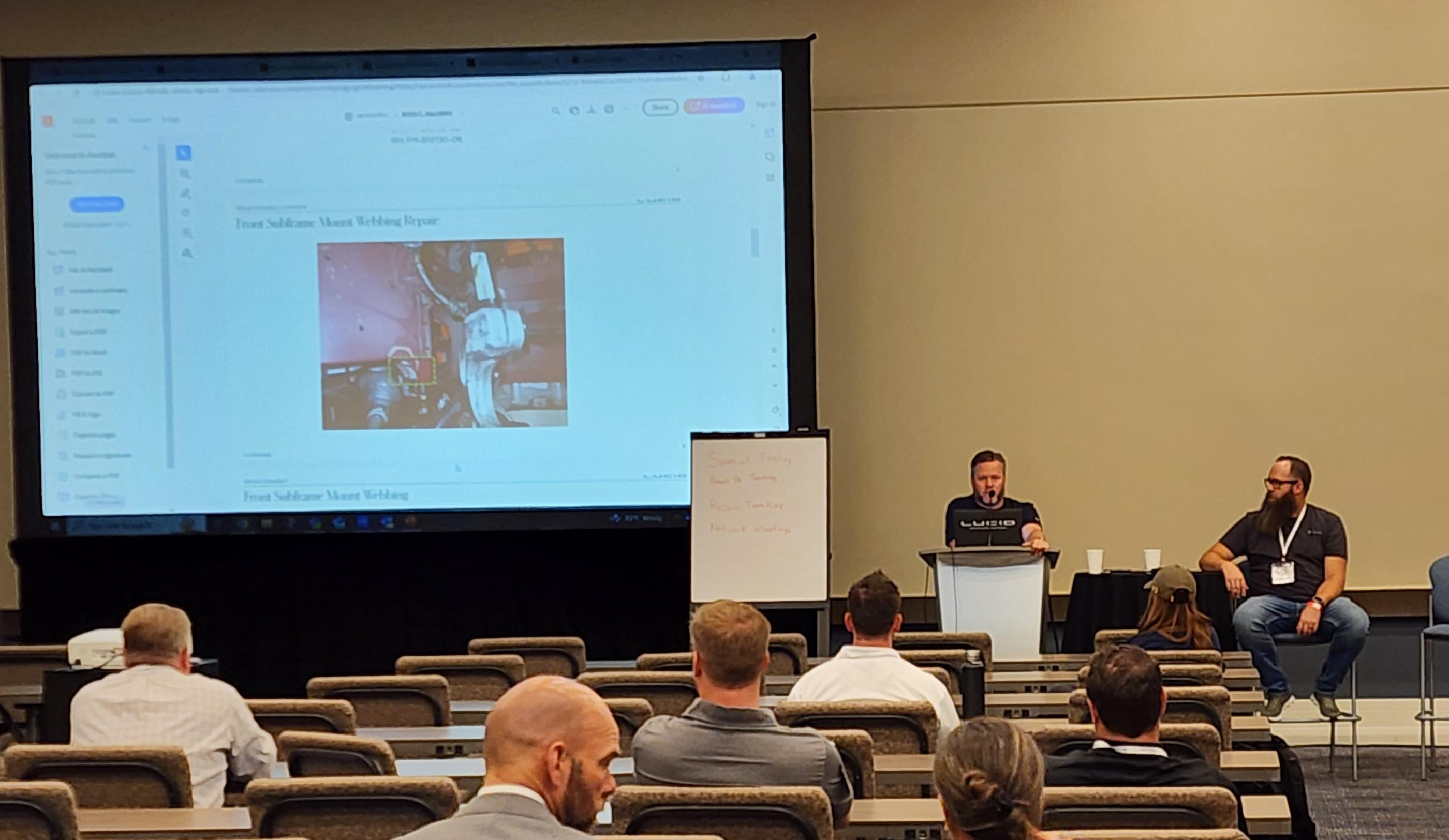 Jake Rodenroth from Lucid Motors and Casey Hamilton from Rivian led an interactive discussion on “Certification: What does it mean to YOU.”
Jake Rodenroth from Lucid Motors and Casey Hamilton from Rivian led an interactive discussion on “Certification: What does it mean to YOU.”
Jake Rodenroth from Lucid Motors and Casey Hamilton from Rivian led an interactive discussion on “Certification: What does it mean to YOU.” This included discussing a shop’s online presence, whether it has an off-the-charts Customer Satisfaction Index (CSI) and customer referrals. They asked attendees to share their opinions on electric vehicles (EVs) and explored whether their business and people are ready for the future. Rodenroth and Hamilton also shared the capital expenses for certification and how to adjust the business model to sustain ongoing training and tooling.
“We don’t see a lot of EVs in our market right now, but I feel it’s important that our shops understand EVs,” said Cotton.
Alex Stapleton and Bret Runyon from Spanesi shared information about measuring repairs correctly. They addressed how to set and meet customer expectations and the importance of creating a process for successful repairs using blueprinting. To maintain quality control, control work in progress (WIP) and ensure goals are met, Stapleton and Runyon recommended inserting hard stops into the business’s standard operating procedures (SOPs). They also talked about issues when finalizing a repair regarding sublets, quality control and test drives.
Greg Peeters of Car ADAS Solutions discussed the critical elements of achieving OEM-centric calibrations.
“It is critical for collision repair facilities across the country to decide how they will meet this increasing demand,” noted Peeters. During his presentation, he talked about advancements in software and equipment, training, implementation and support. Peeters also shared information about the importance of the calibration environment and proper documentation to mitigate liability.
More Effective Customer Communication
Sheryl Driggers from Collision Advice shared insight on moving from a transactional to a relational approach with customers. She shared actionable strategies and resources for attendees to learn how to identify a customer’s DISC communication style, enabling them to adapt their communication for each personalized type. The DISC assessment classifies four personality styles: Drive, Influence, Support and Clarity.
Driggers stressed the importance of identifying a customer’s communication style to provide exceptional customer experience and unparalleled success in a collision repair business.
Other presentations were held by Rod Cahoy from PPG, who talked about refinish area optimization and how to maximize throughput and profit; Tyler Claypool from Optima Worldwide, who shared information about digital marketing; and Clay Hoberecht, of Best Body Shop, and Tim Morgan, who discussed building a body shop in a box and culture from the inside out so it can be duplicated. Maria Quintero, also with Collison Advice, held a financial boot camp for shops to build their accounting expertise and learn how to enhance the integration between CCC ONE and QuickBooks.
On the last day of the Midwest Trade Show, Anderson provided the keynote address, focused on “Success Today, Success Tomorrow.” He shared insight from traveling over 300 days a year, working with hundreds of body shops, OEMs and software companies, and his experiences.
Anderson discussed moving to a four-day work week, OEM insurance and certifications, and DRP versus non-DRP environments. Other topics included how environmental, social and governance (ESG) may impact the industry, trends with customer pay repair orders and why building a relationship with the vehicle owner is critical. Anderson speculated on what the future holds for innovation in scheduling and how AI may impact that. In addition, he shared his latest state-by-state average labor hours per repair order (RO) and per labor category and the consequences of “Being GREEDY!”
For more information about the show, visit midwesttradeshow.org.
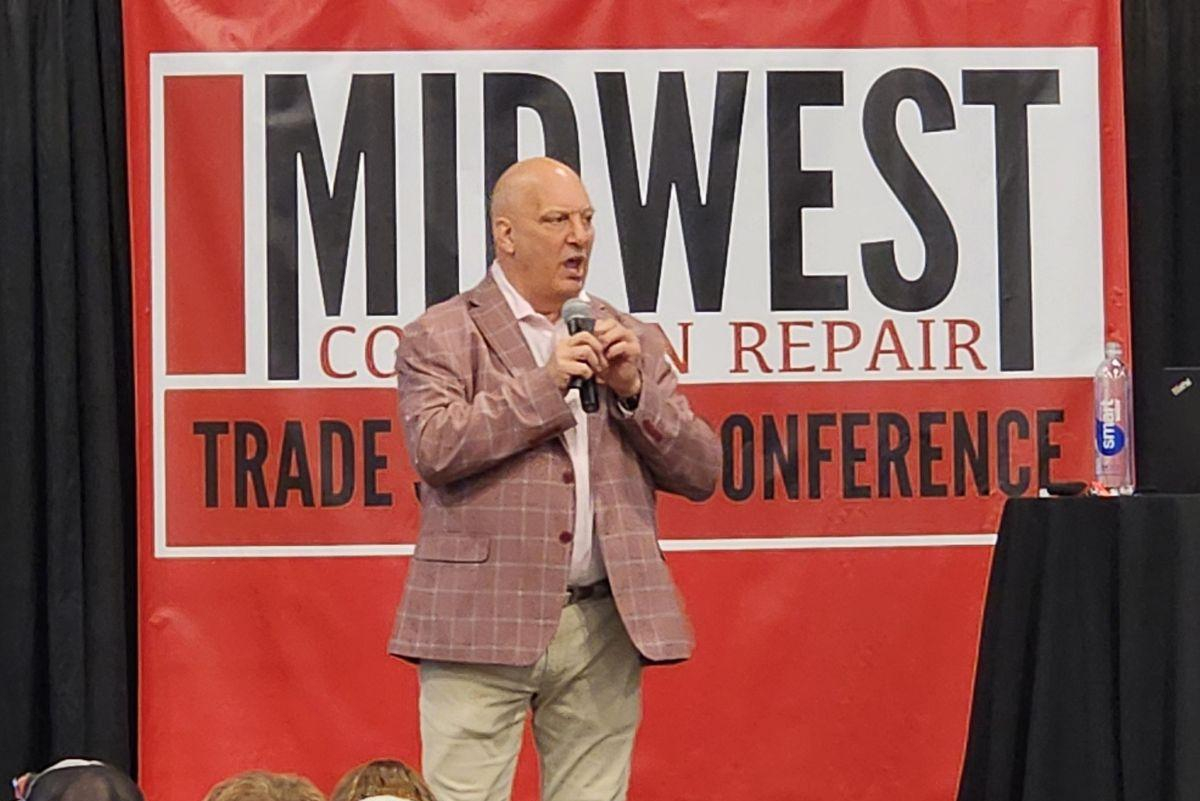
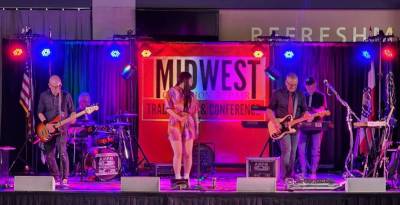
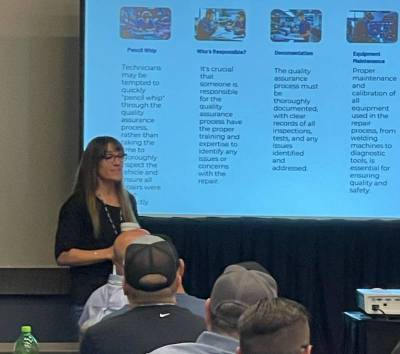
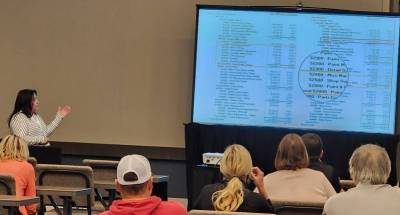
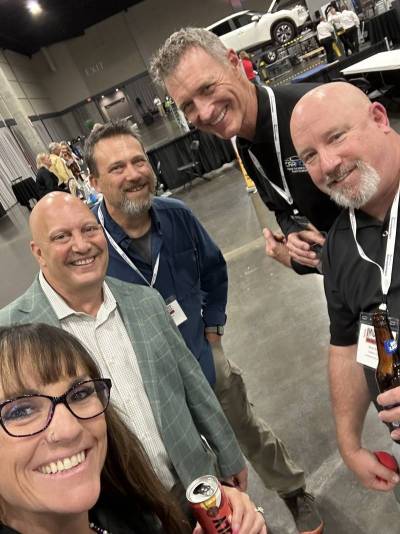
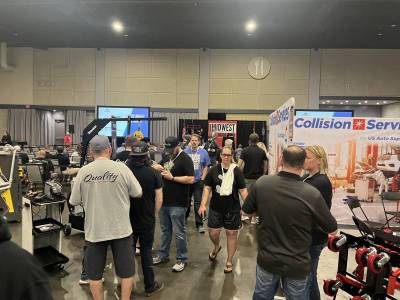
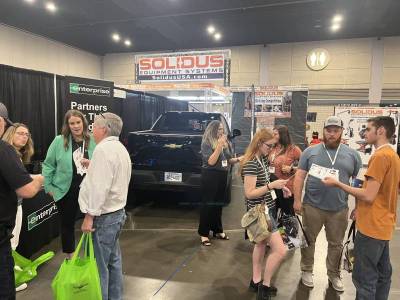
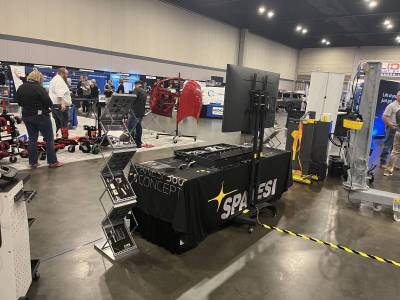














Stacey Phillips Ronak